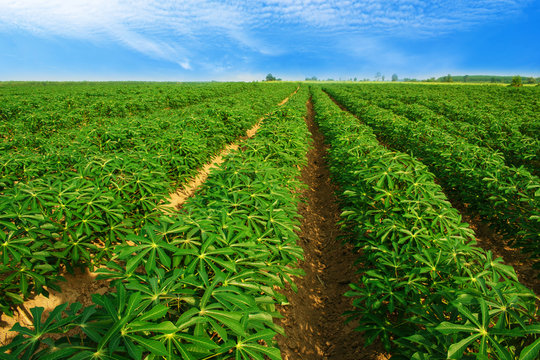Comprehensive Guide to Cassava Farming in Nigeria: Step-by-Step Process for High Yields

Cassava farming is a cornerstone of Nigeria’s agriculture, providing food security and serving as a source of income for millions of farmers. Cultivating cassava involves several critical steps, from selecting suitable land to harvesting mature tubers. This comprehensive guide outlines each stage of cassava farming in Nigeria, offering practical insights to help you achieve a successful harvest.
1. Land Selection
Choosing the right land is fundamental to cassava cultivation. Opt for well-drained, fertile soils with a sandy-loam texture. Avoid waterlogged areas, as cassava roots are prone to rot in excessive moisture. Conduct soil tests to assess nutrient levels and pH, aiming for a slightly acidic to neutral pH of 5.5 to 7.0. Ensure the land is accessible for ease of transportation and management.
2. Land Preparation
Proper land preparation enhances soil structure and promotes healthy root development. Clear the land of weeds, shrubs, and debris. Depending on the scale of your farm, this can be done manually or mechanically. Plough the field to a depth of 20-30 cm to loosen the soil, followed by harrowing to break down large clods. In regions prone to erosion, consider constructing ridges or mounds to prevent soil loss and improve drainage.
3. Selection of Cassava Varieties
Selecting high-yield and disease-resistant cassava varieties is crucial. In Nigeria, recommended varieties include TMS 30572, NR 8082, NR 8083, TMS 4(2) 1425, TMS 81/00110, and TMS 92/0326. These varieties are known for their robustness and suitability to various Nigerian agro-ecological zones.
4. Planting Material Preparation
Use healthy stem cuttings from mature cassava plants, preferably 8-12 months old. Select the middle portions of the stem, which are more vigorous and have higher bud viability. Each cutting should be about 20-25 cm long, containing 5 to 7 nodes. Ensure the cuttings are free from pests and diseases to promote healthy crop establishment.
5. Planting
The optimal planting period in Nigeria is at the onset of the rainy season, typically between April and October. Plant the cuttings at a spacing of 1 meter by 1 meter, accommodating approximately 10,000 plants per hectare. Insert each cutting into the soil at an angle of 45 degrees, burying about two-thirds of its length. This planting method encourages robust root development and maximizes yield.
READ MORE: A Comprehensive Guide to Sustainable Farming in Nigeria
6. Weed Management
Weed competition can significantly reduce cassava yields, especially during the first three to four months after planting. Implement timely weed control measures, which can include manual weeding or the application of selective pre-emergence herbicides within three days after planting. Maintaining a weed-free field during the early growth stages is essential for optimal cassava development.
7. Fertilization
Cassava requires adequate nutrients for optimal growth. Soil testing will guide the specific fertilizer needs, but general recommendations include applying NPK 15:15:15 at a rate of 12 (50 kg) bags per hectare, NPK 20:10:10 at 9 (50 kg) bags per hectare, or NPK 12:12:17 at 15 (50 kg) bags per hectare. Apply fertilizers 8-10 weeks after planting, using the ring method: create a 6 cm wide ring, 10 cm away from the plant, and place the fertilizer evenly within this ring. Avoid direct contact with the stem or leaves to prevent damage.
8. Pest and Disease Management
While cassava is relatively resilient, it can be affected by pests such as cassava mealybugs and diseases like cassava mosaic disease (CMD). Implement integrated pest management practices, including regular field monitoring, use of resistant varieties, and maintaining field hygiene. Early detection and prompt action are vital to minimize damage.
9. Harvesting
Cassava matures between 9 to 18 months, depending on the variety and growing conditions. Harvesting is typically done manually by uprooting the plants. Signs of maturity include yellowing of leaves and cracking of the soil around the base of the stem. Harvest during the dry season to reduce post-harvest losses and facilitate processing.

Comprehensive Guide to Cassava Farming in Nigeria: Step-by-Step Process for High Yields
10. Post-Harvest Handling
Cassava roots are highly perishable and should be processed or marketed within 48 hours of harvest to prevent deterioration. Processing options include converting the roots into garri, flour, or starch, which adds value and extends shelf life. Proper post-harvest handling ensures product quality and maximizes profitability.
By meticulously following these steps, farmers can enhance cassava productivity, contributing to food security and economic growth in Nigeria. Continuous learning and adaptation of best practices will further ensure the sustainability and profitability of cassava farming enterprises.

Leave your comment